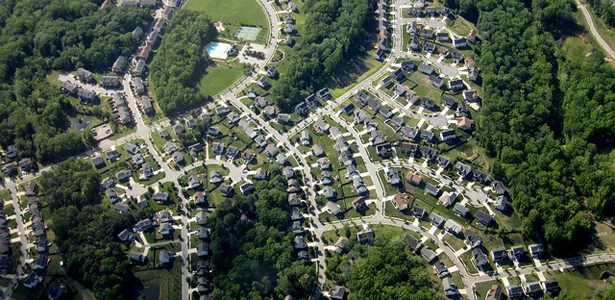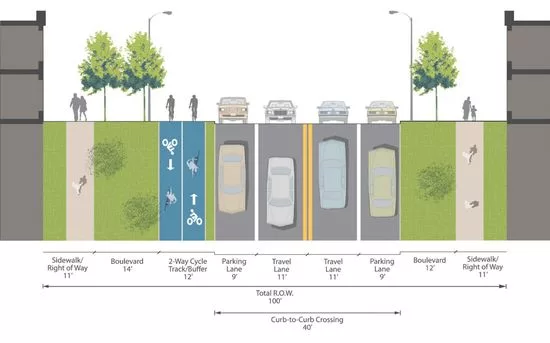
In recent years, with the adverse effects of global warming and decreasing earth’s resources, sustainability has come to the fore in many areas, from food to clothing. However, the fact that the resources we need to sustain our lives are not infinite necessitates a balance between man and nature. The task of establishing this balance belongs to human beings. The aim is to develop without exceeding the ecosystem’s capacity that offers living space to man. The impact of settlement and construction patterns on the ecosystem is an essential topic for research.
Although cities occupy only 2% of the world’s surface area, they contain half its population. In just a few decades, more than two-thirds of the world’s rapidly growing population is expected to be urban. Cities consume three-quarters of the world’s resources, accounting for most waste and pollution (Baş, 2018).
The International Energy Agency estimates that urban areas consume 67% of all energy produced globally, accounting for 71% of worldwide CO2 emissions (Wang et al., 2019).
The rapid growth of cities is a significant challenge to the UN Sustainable Development Goals (SDGs). One of the main obstacles is urban air pollution, which presents one of the most important public health risks worldwide. The World Health Organization (WHO) estimates that almost all the global population (99%) breathes polluted air that exceeds WHO limits. Every year, 7 million deaths worldwide are attributed to ambient air pollution (WHO, 2021). In general, air quality in urban areas tends to be poor.
Current urban development in many parts of the world requires a high conversion rate of natural areas and farmland into urbanized land. This has severe negative impacts on food security, ecosystems, and biodiversity.
This article mentions urban planning initiatives and city models that best suit today’s urban environment.
Sprawl
The first planning initiative to reduce environmental problems was the modern planning initiative that separated residential, industrial, and commercial functions that took shape in post-World War II America. This planning approach makes settlements less dense and spreads toward rural areas. The sprawling city model is based on a belief that emphasizes using more open spaces and gardens (Baş, 2018). However, low-density development also makes providing a public transport system complex and expensive. Urban sprawling, along with road construction to meet the expected future demands for road capacity, contributes to creating cities that are highly dependent on cars. This involves high energy use for transport and challenges meeting greenhouse gas emission reduction targets (Næss, 2014).
Controlling growth in line with the primary objective of a sustainable city, slowing or stopping the outward spread of towns; it is planned to harmonize land use with transportation systems, ecological and recreational requirements, and existing development (Tosun, 2013). Therefore, the compact city model is accepted as the most accepted ideal city model within the scope of the primary goal of sustainability and in the process of realizing sustainability.

Compact
The compact city model began with the new urbanization movement in America after 1980. As a sustainable city plan, a compact city provides intensive and mixed land use, transportation systems based on pedestrian and public transportation, integration of functions on a human scale, protection of urban green structure, provision of technical infrastructure, and coordination of social development (Memlük & Mikaeili, 2013). The compact city model aims to provide energy and resource efficiency based on density increase and mixed land use, while at the same time, it is based on the belief that vibrant, vibrant urban areas can be created (Baş, 2018). One of the main objectives of a compact city is to reduce the impact of urban development on rural areas.
While the concentration of residential areas in the city is shown as the leading cause of environmental problems, on the other hand, it is suggested that this concentration increases efficiency and provides environmental advantages by providing everyday use of land, infrastructure, water, energy, road, and public transportation systems (Næss, 2014).
The urban form also influences travel behavior and, thus, air quality. Dense urban environments are often more exposed to noise and local pollution from traffic. Because intensive urban development patterns usually mean that a higher proportion of transport occurs within a confined geographical area, increasing pollution concentration.
Nozzi (2003) states that the most basic factor in the formation of air pollution is the spread of the city and that the spreading cities create 20-50 percent more pollution than compact cities (Baş, 2018).
On the one hand, an expanding, car-dependent urban development is incompatible with environmental sustainability. Still, on the other hand, urban concentration risks exposing more residents to living conditions that seem unfavorable to their health. Solving this paradox will be possible by minimizing the adverse effects of this growth while trying to repair some of the environmental damage caused by urban development.
It should plan cities and their environments in an intelligent and climate-friendly way.
First of all, for a healthier transportation model, there is a need for public transportation and urban planning that encourages the use of walking and cycling. To limit travel distances, residences should not be too far from the concentration of businesses, administrative centers, special services, and cultural facilities, usually in the city center (Næss, 2014).
For existing and new inner-city residential areas, more efforts should be made to provide green courtyards that offer outdoor recreation and opportunities for traffic to play in a safe environment. By planting rows of trees along sidewalks, installing “green roofs,” and transforming asphalt areas into lawns, shrubs, or other vegetation-covered regions, high-intensity development’s negative urban heat island effect can be significantly reduced. In addition, the health of city dwellers can be protected by installing an air quality monitoring system to identify sources of urban pollutants and improve air quality.
References
Baş, H. (2018). Sustainable City Form: Compactness Against Spillover. Turkey Urban Morphology Network, 105-115.
Holden, E. (2004). Ecological Footprints and Sustainable Urban Form. Journal Of Housing And The Built Environment, 19(96).
Memlük, Y., & Mikaeili, M. (2013). Compact City Concept and Application Examples in terms of Ecology and Environment. Anatolian Journal of Natural Sciences, 4(2), 37-50.
Næss, P. (2014). Urban Form, Sustainability and Health: The Case of Greater Oslo. European Planning Studies, 22(7), 1524-1543.
Tosun, E. K. (2013). Analysis of the Compact City Model in the Process of Sustainable Urban Development. Dokuz Eylül University Journal of Social Sciences Institute, 15(1), 103-120.
Wang, S., Wang, J., Fang, C., & Li, S. (2019). Estimating the impacts of urban form on CO2 emission efficiency in the Pearl River Delta, China. Cities, 85, 117-129.
WHO. (2022). Air Pollution.












